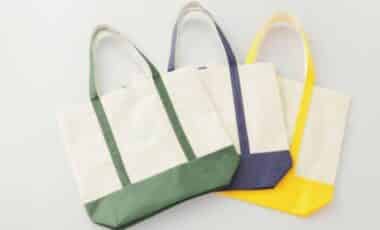
Polpat Asavaprapha
Polpat Asavaprapha of Asava Group is a force to be reckoned with in the Thai fashion industry. Having established his brand in 2008, this year marks Asava’s 10th anniversary. “I started fantasising about doing something in the fashion industry when I was in my early teens,” he says. “Back then, the industry in Thailand was very small. There were things going on but they weren’t systemic, the size of the market was miniscule, it was more like local dressmaking shops providing service. Also there weren’t many international brands in Thailand as they only started to come here in the late 1980s. Unlike today, in that era it was almost impossible to think about becoming a fashion designer. Even if you had connections, it wasn’t considered a stable career with a future. You wouldn’t be able to earn a steady income. So it was very hard to imagine that one day I would become a designer, although secretly I dreamed of becoming exactly that.”
After many years of success with his brand, last year Polpat launched a smart and sophisticated bridal wear line called White Asava. When asked about the inspirations behind it, he explains that the bridal line had actually been part of his plans long before it was launched. “Although White is only just over a year old, it is something I’ve planned to do for a long time but didn’t have enough time to start until recently. Currently we only design wedding dresses, we don’t do tailoring for grooms. However, most prospective husbands come along with the bride and they often ask me about where to get their suit made or how they should dress. It’s my plan to do a men’s line. I think it’s very hard to find a good tailor in Thailand. Some are perhaps too classic, some too trendy. I think finding a balance is quite challenging and something I’d like to do one day.”

Polpat’s philosophy of timeless simplicity is expressed through his elegant designs, which focus on construction and fabrics rather than frills
As for the design process of the wedding dresses, Polphat follows a philosophy of effortless simplicity. “Our dresses are very simple. We don’t have poofy chiffons and so on, so construction is very important, as are fabrics and patterns. Hence we try to use very old techniques like boning to create very constructed garments—techniques that we don’t use in our ready-to-wear collections at all. Every single stitch is important. It’s all about precision and proportion, everything has to be on-point. We try to make each and every dress as perfect as possible.”
Tirapan Vanarat

Tirapan is known for his unique use of fabrics
Tirapan Vanarat, or Pom, of Tirapan boutique is one of Thailand’s best-known couturiers. Now age 68, the industry veteran is still actively designing for a loyal clientele. A graduate of interior design at Woodberry College in the US, he discovered his passion for fashion during his college years and studied fashion design as a minor. After earning his bachelor’s degree, he studied fashion design and tailoring at Jeoffrin Byrs and Esmod Guerre Lavigne in Paris, returning to Thailand after three years to establish Tirapan specialising in evening wear and wedding dresses using the traditional haute couture techniques he had learned in France.
In addition to his techniques, what makes Tirapan unique is his use of fabrics, particularly Thai cotton, lace and silk. “I know fabrics very well, but I am particularly interested in Thai silk and also lace. When I was young, my mother would always wear silk and perhaps that influenced me. I think silk and brocades are the best. They are the hardest fabrics to work with but the most elegant when used in a design. Hence they are perfect for special occasion outfits, particularly engagement dresses and bridal gowns. The best Thai brocades for me are pikul and hang nokyoong. The very best of these are made in Chiang Mai and Lamphun and I order them whenever I am commissioned to design an engagement or wedding dress,” he says. Known for the creative combinations of fabrics in his work, Tirapan often mixes silk with lace to create more depth to a piece.

A bride looking radiant in a Tirapan design
A stickler for detail, Tirapan always talks to the bride before making dress sketches and designs. Interestingly, he also takes into consideration the venue and type of wedding his dress will be worn at. “If it’s a church wedding, for example, the bride might not be allowed to expose her shoulders and back. You have to be aware of these details and respect the venue.” With decades of experience behind him, Tirapan has gathered many anecdotes related to the design of wedding dresses. “There are many interesting stories, but one that touches me still relates to an old customer who came in with bolts of beautiful silk brocade and asked me to keep them for her daughter. She was young at the time and studying abroad. The lady told me that the brocade was to be for her daughter’s engagement dress and I should hang on to it until the young lady got engaged. I was happy to. The twist was that I did not know that the mother was very ill when she came to me and sadly she passed away not long after. She was one of my loveliest customers. Then one day her daughter came to me and told me she was getting married. Out of happiness and excitement, I presented her with all the fabrics that her mother had left with me and told her that her mother had left them for her engagement dress. She had no idea and started crying. It was very touching. The mother had prepared everything for her daughter but didn’t know who to leave the fabric with. The fact that she trusted me with it and wanted me to make dresses for her daughter was a real honour.”
Vatit Virashpanth and Itthi Metanee

Vatit and Itthi combine their creative identities through the pieces in the Vatit Itthi brand
There is no denying that Vatit Virashpanth and Itthi Metanee are a truly dynamic duo. The pair established their eponymous Vatit Itthi brand in 2002 with a bridal line that is divided between prêt-a-porter wedding dresses based on an annual collection and bespoke wedding couture. Itthi explains how each requires two different thinking processes:
“The collection, which comes out once a year, is an accumulation and condensation of ideas generated over the previous 12 months. Vatit and I talk about the things we have seen that inspire us, and then the staff in the hand-made department help us to develop those ideas. For example, it might be specific types of leaves or flowers—we make them petal by petal and join them to form a flower, for instance. By the time we start doing the actual design, we have discussed what we want to do for that collection. Mostly it will be things we’ve never tried before. Collections are limited by quantity, and we have to consider the runway show, so we look at what Vatit wants and what I want before combining that, as well as the mood and tone of our culture and the new techniques we’ve been developing. We then sketch and edit down or combine our ideas. We’ve come to notice that we both like to tone everything down, so sometimes we consciously add more embellishment to our designs to see if they work. Occasionally it turns out great, but even then we have to make sure that the details are neat and clean.”

Vatit Itthi designs are a mix of nostalgic glamour and modern American styles
With individual bespoke designs, things are a bit different. “We’re inspired mostly by the fabrics. When we see the silks and lace we can usually visualise what the dress will look like. For details, such as feathers, flowers and leaves, we experiment with our hand-made team to integrate ideas such as an accessory piece to the dress. Say we want something like a paper-cut flower, we make these details out of fabric, sometimes combine different textures and opacities with different cuts and drapes,” says Itthi.
Masters of their trade, the two know their fabrics well. “We always play around and create new techniques whenever we work on a new bridal collection. For instance, I might want to experiment with an asymmetric but balanced drape. We sit down in a corner that resembles our place in Chicago where everything first started. I come up with ideas and Vatit goes and makes it. We want to maintain our hands-on creativity and do some of the work ourselves, rather than just explaining to our craftsmen and have them make it for us. This also means that we sometimes discover what we call happy mistakes, design ideas that turn out to be better than the original plans.” Most importantly, the two work well with each other. “When I think of something, Vatit can make it with his sewing machine in 10 minutes, so we have a very productive chemistry.”
Pichitra Boonyarataphan

Pichitra pays attention to every aspect of the client to create a dream wedding dress for her
Alongside Somchai Kaewthong and Tirapan Vanarat, Pichitra Boonyarataphan, also known as Jeab, is part of the first generation of couturiers to blaze a trail for Thailand’s fashion industry. The softly spoken daughter of Lamyong Boonyarataphan, founder of the renowned Rapee Institute of Fashion, over the years Pichitra has created a legacy of her own through her brand, Pichita.
Exposed to the world of fashion as a young child, at the age of 16, Pichitra was sent to study in Switzerland and the Paris Chambre Syndicale de la Couture in France before returning to Thailand in 1978. Beautiful and talented, before establishing her own brand in 1980, Pichitra was a model for some of the most renowned French design houses. Soon to celebrate its 40th anniversary, Pichita has grown from a ready-to-wear line to include Atelier Pichita and Pichita Haute Couture. While Atelier Pichita offers semi-couture tailor-made garments, Pichita Haute Couture caters specifically to a clientele wanting one-of-a-kind evening gowns and wedding dresses. “Pichita Haute Couture is a VIP by-appointment-only service, a label for clients who come to us for outfits for special occasions, outfits such as Thai dresses, evening gowns and, in particular, bridal gowns,” Pichitra explains.

Pichita Haute Couture demonstrates impeccable quality and craftsmanship
Back in the days when wedding boutiques were rare, getting a wedding dress tailored was often inconvenient and expensive, sometimes requiring the bride to fly abroad to be measured. So when Pichitra established her business, she found a willing audience. “People would come to me to design wedding dresses for them. It was a very special process because the dresses themselves were one of a kind and I had to design according to the client’s body shape, even their skin tone. Some customers would have a dream wedding dress in mind that frankly didn’t suit them, so I’d have to talk them round to another design. I was very meticulous about quality too—after all, the garments we were making were a once-in-a-lifetime deal—and eventually word started to spread,” she says. Through her experience and skills, she quickly gained a reputation for excellent craftsmanship. It is a reputation that continues to this day. “The trust of the client is all-important. Mothers keep their dresses and when their daughters grow up they bring out my dress and tell them that if they want something like this they should come to Auntie Jeab,” she smiles.
Somchai Kaewthong

Somchai of Kai is a veteran designer who has gained the trust of many generations
The first person to be honoured as a National Artist in fashion design, veteran designer Somchai Kaewthong of the famous brand Kai—Kai being his nickname—is another pioneer of Thailand’s fashion industry. He has led Kai boutique for almost 50 years, making it a household name and go-to for generation after generation. Recalling his start in the business he says, “I went to see a film at Siam Cinema and there was a tailor’s shop nearby that was closing down. The shop was available for 3,000 baht per month and I decided then and there to rent it. Coincidentally, one the staff at the shop happened to be the student of a friend of mine, so I was able to secure the space quite easily. That was how Kai boutique was born.” Having lived near Pahurat market, a prime area for materials back when women would shop for fabrics to take to a tailor, fashion was part of his everyday life from an early age. His love for fashion and art was further honed while studying at the Pohchang Academy of Arts in Bangkok.
The loyal customers of Kai boutique go back to its beginnings. “It is the case that a mother would refer her daughter to us, who would in turn refer her daughter and so on. Despite the many years that have passed, if you maintain your standards and quality then people will still come to you,” the designer says. However, Somchai agrees that one has to keep adapting and updating to stay relevant in a changing world. “The older generation of designers will be regarded as legendary, but one also has to keep on evolving because there will always be new young designers joining the industry.”

Kai makes sure the bride looks her most beautiful on the most important day of her life
Establishing his boutique in 1968, Kai has catered to the various demands of clients, from everyday wear to evening gowns and wedding dresses. “Making wedding dresses is actually a form of brand advertisement in itself. This is because weddings often attract hundreds of guests, all of whom will see your design. In fact, today, that number can reach up to a thousand.” However, for Somchai the number of guests at a wedding isn’t the only important factor. “Whether you host a small wedding with only loved ones attending or a huge affair with thousands of guests, the importance of the event is just the same. A wedding is not just about two people uniting. Traditionally, it’s about the joining of families as well. Aside from her own wedding, a mother’s happiest day is seeing her daughter marry. The wedding dress is a big part of what makes the day so special, so it’s important for the designer to put his or her greatest care into making the bride feel beautiful and look her most dazzling on a day she will never forget.”
(Related: 5 Female Illustrators Between The Lines )







